If you feel you need to freshen your space or clear negative thoughts, sage smudging sticks are said to be a natural and easy way to purify negative energy. Here’s how to make a smudge stick using herbs and flowers you can gather in your backyard.
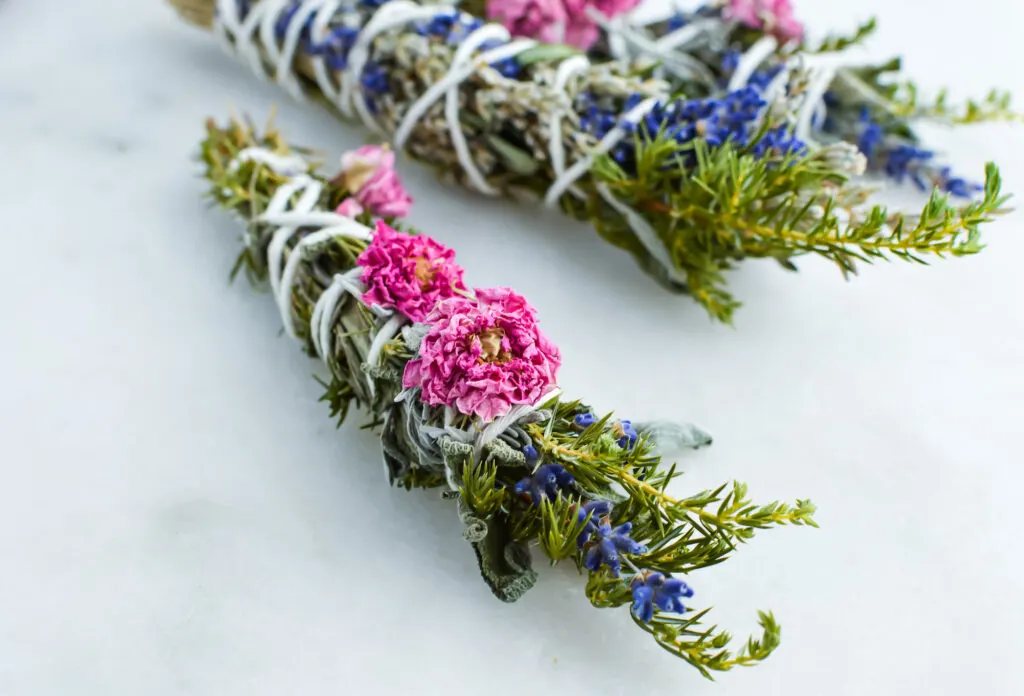
I am not a medical professional, nor am I making any claims about the health benefits of smudging sticks. This blog post is for informational purposes only. Burning smudging sticks can cause a fire hazard if let unattended.
What Are Smudge Sticks?
Smudge sticks are bundles of herbs, flowers or a combination of the two that are burned to clear negative energy and improve positive energy flow in a space. The process of burning a smudge stick is called smudging. It can also be called “saging.” Native Americans first used smudging in sacred rituals.
With the belief that they can clear stuck energies, smudge sticks are used to remove negative energies from a home or place of meditation. Smudging is often used when moving into a new home to clear the energy of previous owners.
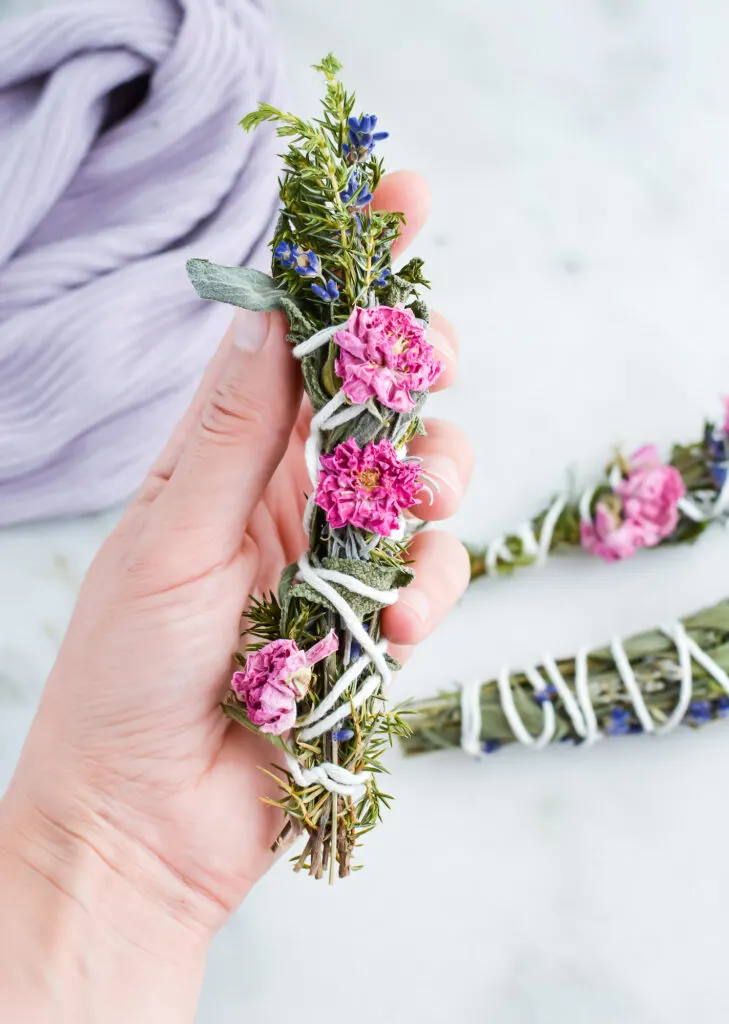
My DIY Sage Spray not only cleans your home from dirt and grime, but it might also have energy clearing benefits, too.
Different Types of Smudge Sticks
All smudge sticks are made of one or a combination of dried herbs, flowers and tree branches wrapped together with twine. Ingredients are chosen based on the specific properties of each plant.
The following are the most traditional ingredients in a smudge stick:
White Sage / Garden Sage
The most used and well-known herb for smudging is White Sage. Benefits are believed to be cleansing and purifying the body, protection and fending off evil spirits.
Common garden sage can also be used in smudge sticks, too. There are a variety of sages, and they can be used for smudging.
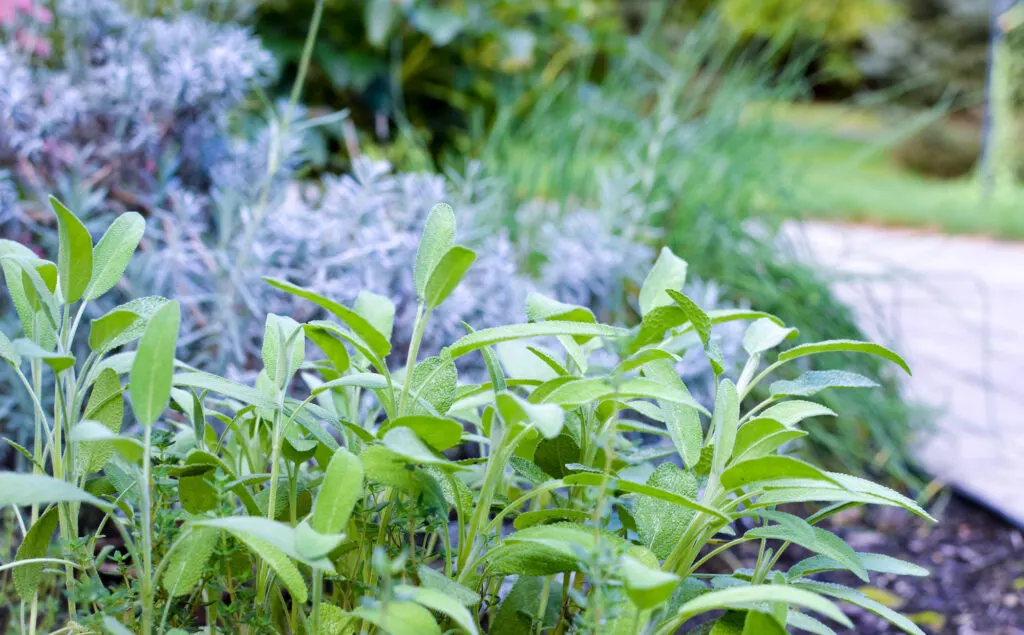
Yerba Santa
Also known as “Holy Herb,” this plant is believed to improve healing and protection, as well as bringing inner courage and psychic powers.
Blue Sage
Thought to bring a more calming energy for relaxation, Blue Sage has a pleasant scent that many people prefer instead of White Sage. It is used for cleansing a space.
Palo Santo
Known as “Holy Wood,” Palo Santo was burned by the Incas and the Andes’ indigenous people in their cleansing ceremonies. Modern day Catholic holy days often have Palo Santo smudges. The wood is thought to clear negative energy, improve relaxation and increase harmony and joy. It was used for medicinal purposes by ancient peoples and continues to be used for relieving some ailments even today.
Lavender
Lavender flowers and Lavender Sage are two different plants. However, both bloom with flowers. Burning either the sage or the flower will release a floral fragrance. Using lavender smudge sticks is thought to improve relaxation, calm the mind, and could result in better sleep. Adding lavender to a smudge stick will help the aroma, offsetting some of the more medicinal aromas from other herbs.
The flower is also great for repelling mosquitoes in your backyard. Or using in a simmering potpourri pot to add fragrance to your home.
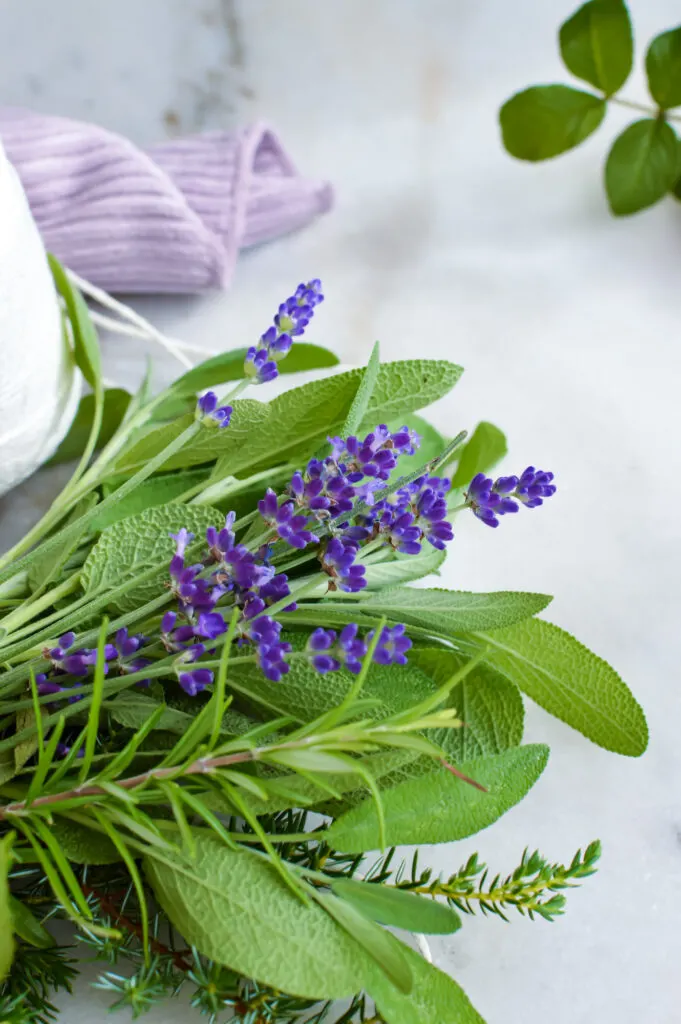
Rosemary
This common herb is most well-known for using in recipes. Rosemary can improve a sense of peace, clear negative energy and invigorate both body and mind when used with smudging.
Eucalyptus
This very fragrant plant is often used in medicinal applications to open up nasal passages and improve breathing. (Such as these DIY sinus congestion relief bath salts.) Eucalyptus leaves can also be added to smudge sticks to purify and cleanse energy.
Cedar
Dried branches from a cedar tree bring an earthy, woodsy scent to smudging. Cedar is often used for cleansing a home of old energies and promoting positive new energy.
Juniper
A common tree that might be found in your own backyard, Juniper is believed to keep negative energy away while attracting positive and healthy energy.
Pine Needles
The powerful woodsy aroma is used for cleansing and purifying. You can use branches off of a pine tree at home or in the woods.
Pine is also a great addition for these DIY scented vinegars.
Floral Smudge Sticks
You can add flowers to your sticks to make them pretty and to release fragrant aroma when smudging. I used wild roses in the smudge stick I made. Lavender is another popular option.
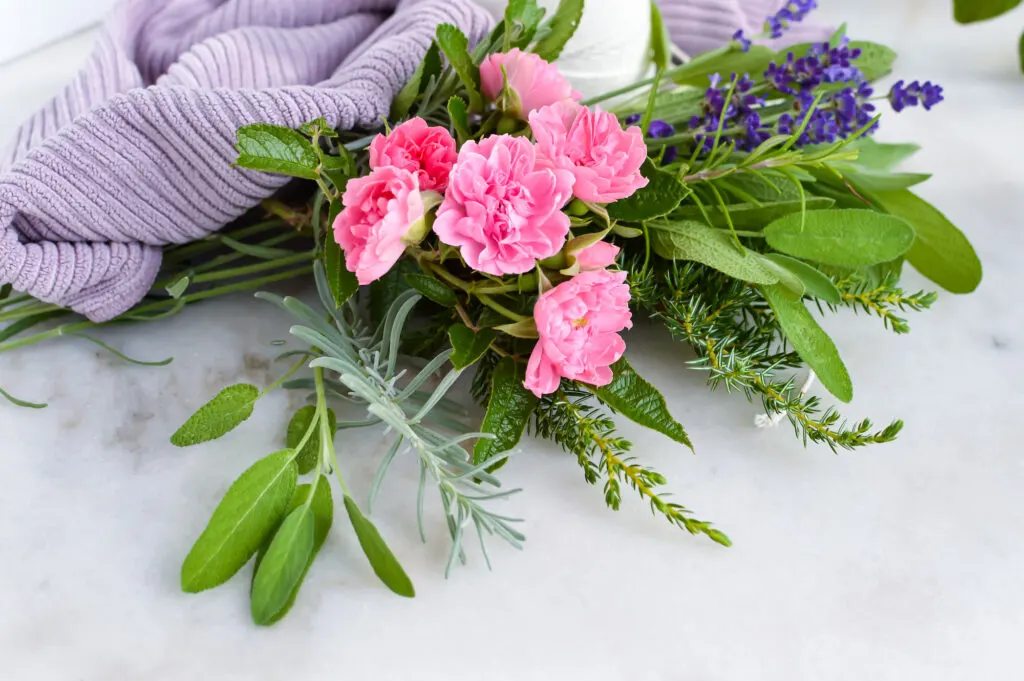
If making a smudge stick is not possible or too time-consuming, there are many great smudge kits available online that give you the same results.
DIY Smudge Stick
You may use fresh or dried flowers and herbs to make a smudge stick. However, I’ve found that fresh ones are much easier to work with. Just let them dry for about 2 weeks before the smudge stick is ready to use.
Ingredients
- Bundle of fresh white or common sage
- Additional herbs and florals (I used wild juniper, wild roses, white and purple lavender, and rosemary)
- Cotton or hemp twine, 4-foot piece
Directions
If needed, rinse and completely pat dry the fresh herbs and flowers.
Lay a large handful of fresh cut sage out and then add in layers of additional herbs and wildflowers. I used what was local and seasonal to us, all found in our gardens or surrounding our property. However, you can often find many stores that can supply plants when not in season.
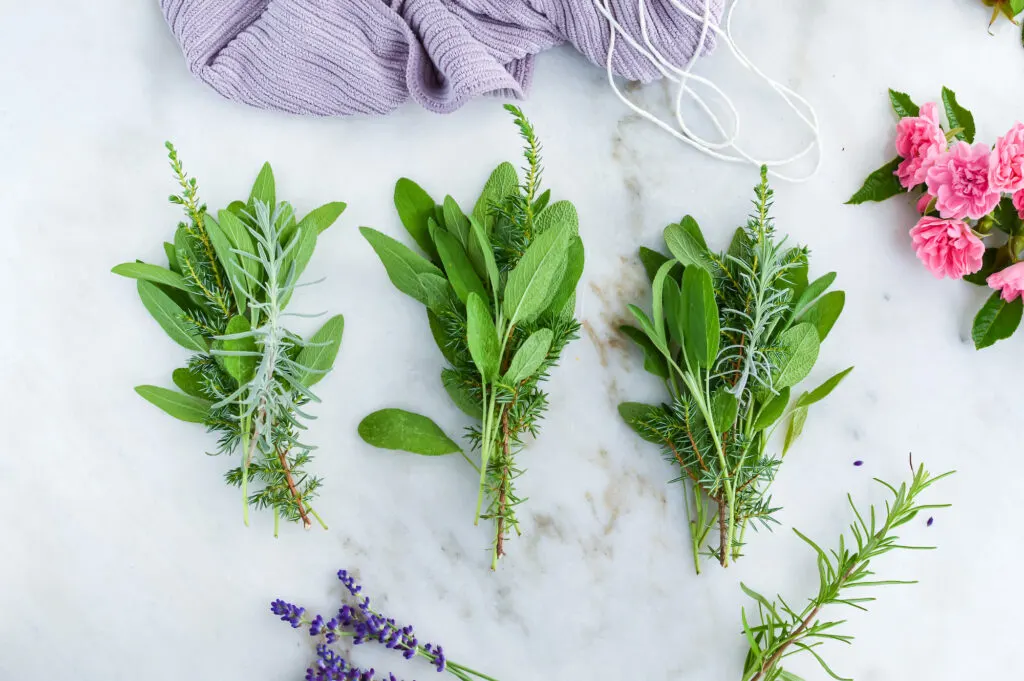
Grab the bundle together tightly in your hand and tie a tight knot around the base of the herbs and flowers, leaving half of the amount of twine on either side of the knot. You can also tie a knot further up the stems, then cut off the extra foliage underneath the base of the wrapped section if you want to.
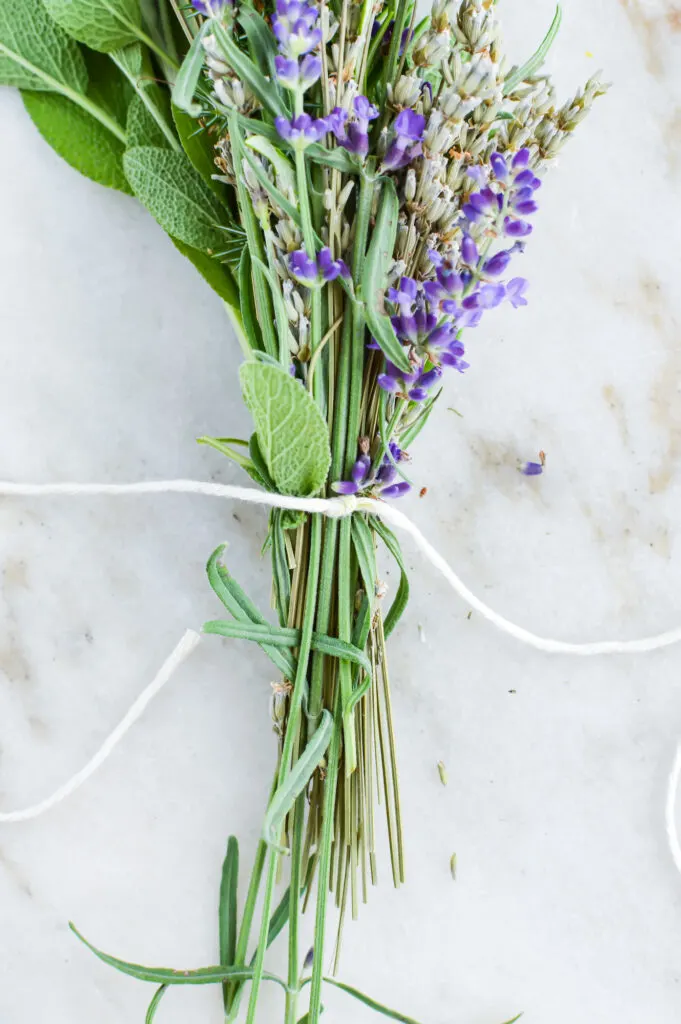
Slowly start to criss-cross the twine up the bundle. Overlap the twine with a small X, then wrap around the bundle and move up, making another small X with the twine. This step is important for helping to keep the herbs together.
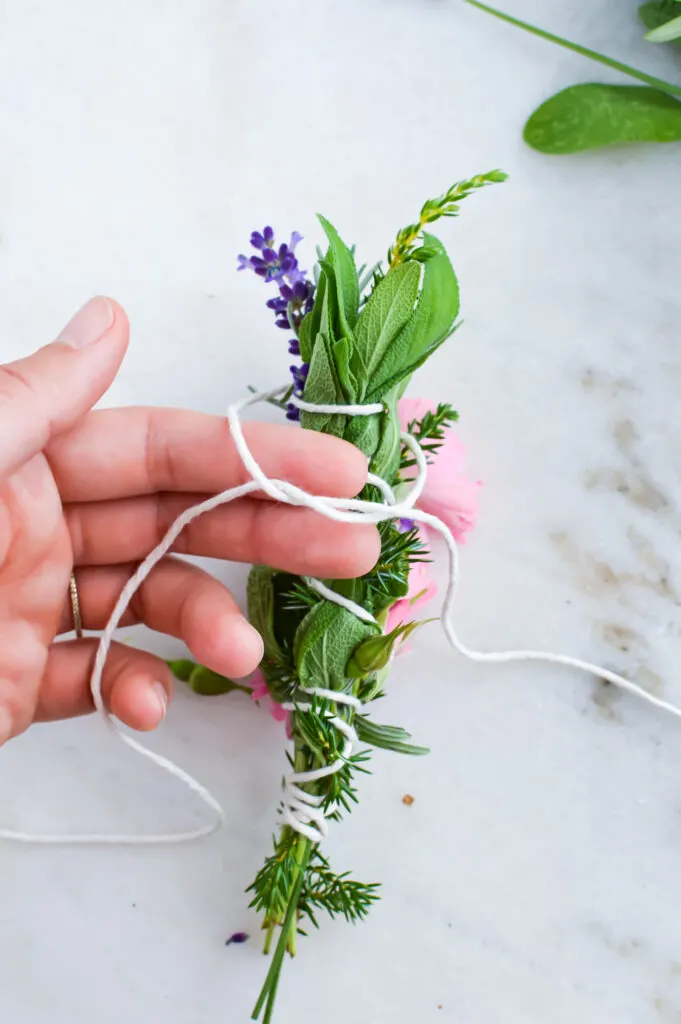
When you are almost out of twine, tie one more tight knot. You could choose to knot off the twine in additional places as you criss-cross it, but I have not found it necessary for keeping the bundles together.
For my floral smudge sticks, I chose to wrap the twine around and under the wild roses, rather than wrapping the twine over the petals. I did this so that the smudge sticks were pretty, knowing the petals would dry tightly against the sticks.
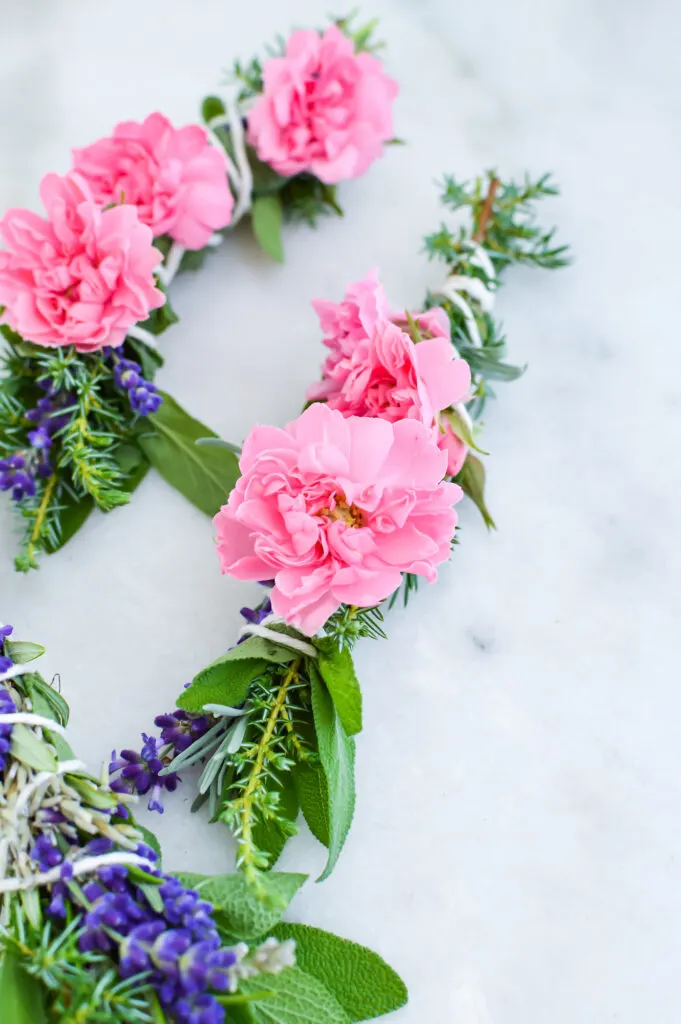
If using fresh herbs, hang the bundle upside down or lay on a dry piece of paper out of direct sunlight and away from moisture. This will dry the sage bundle. Allow the bundles to dry for about 2 weeks before they are ready to use.
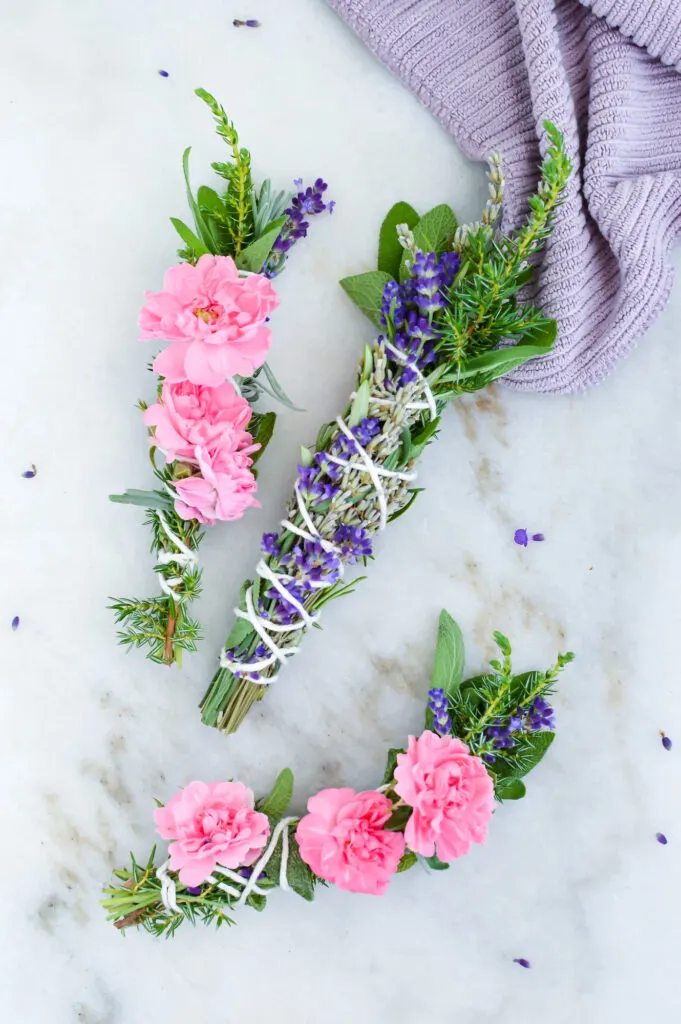
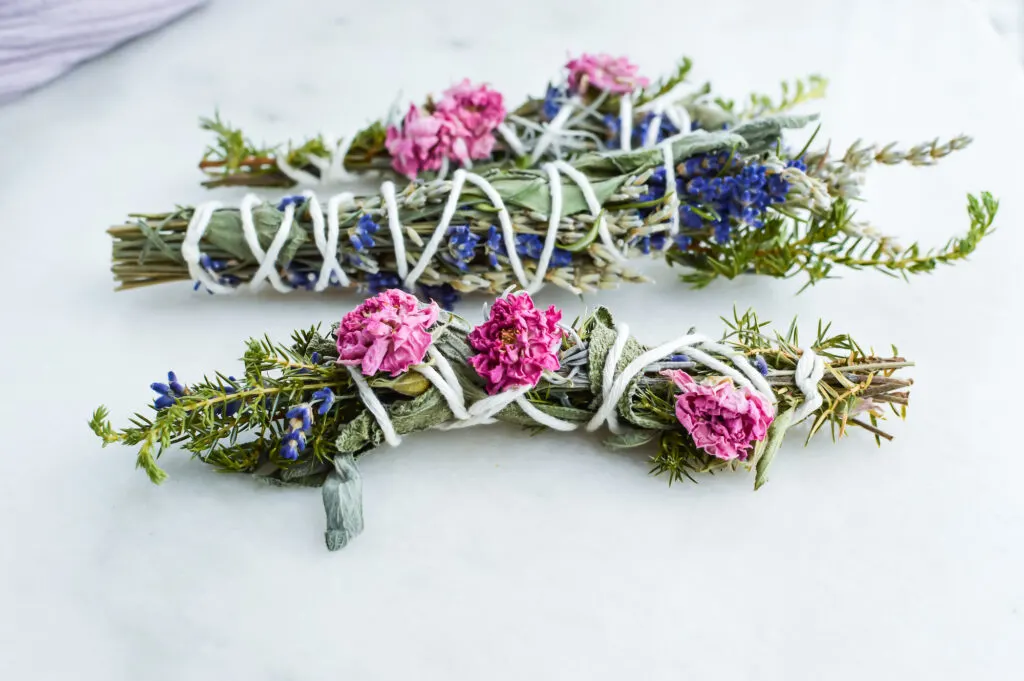
If you are using dried herbs, you may use the stick right away.
What Kind of String to Use for Smudge Sticks
The string that you wrap the smudge stick with will burn. Choose a natural, chemical-free string. Hemp or jute string works great. Cotton twine is also inexpensive.
How to Light a Smudge Stick
Don’t be worried about how to burn a smudge stick. It is as easy as lighting a candle. Hold the tip of the stick upside down (usually where the leaves are gathered, rather than the stem ends). Light the tip of the stick with a lighter, a match or hold over the flame of a candle.
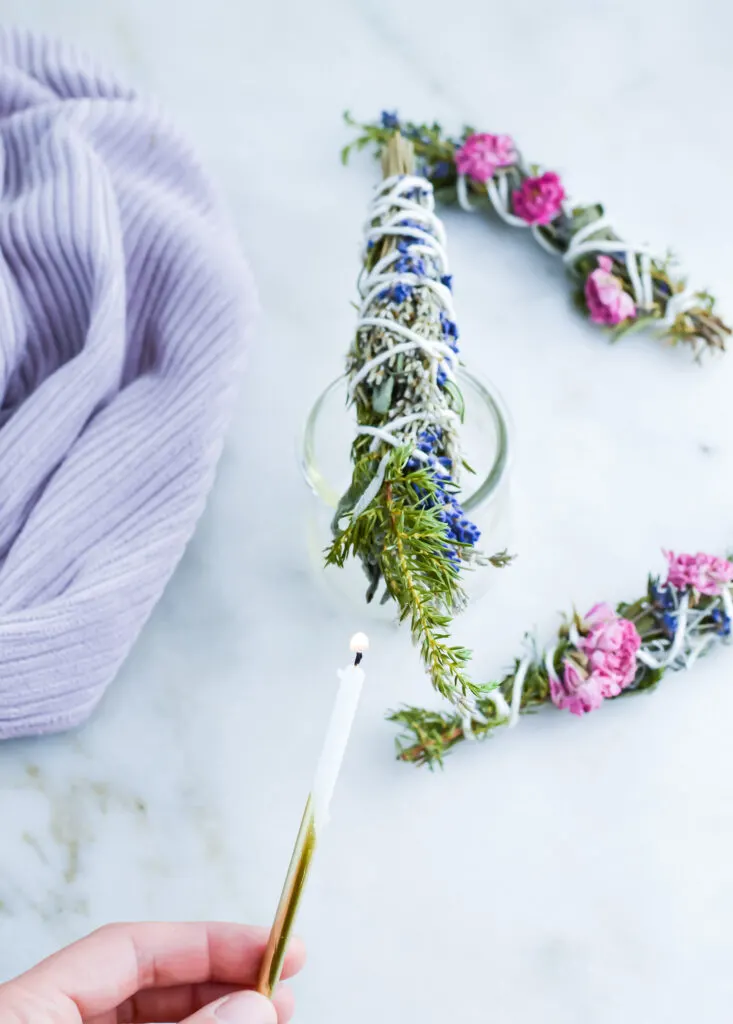
Allow the flame to catch the smudge stick on fire. Then, gently blow out the flame and let the herbs and flowers smolder and smoke. The smoke is what you want to waft through the space to clear out energy.
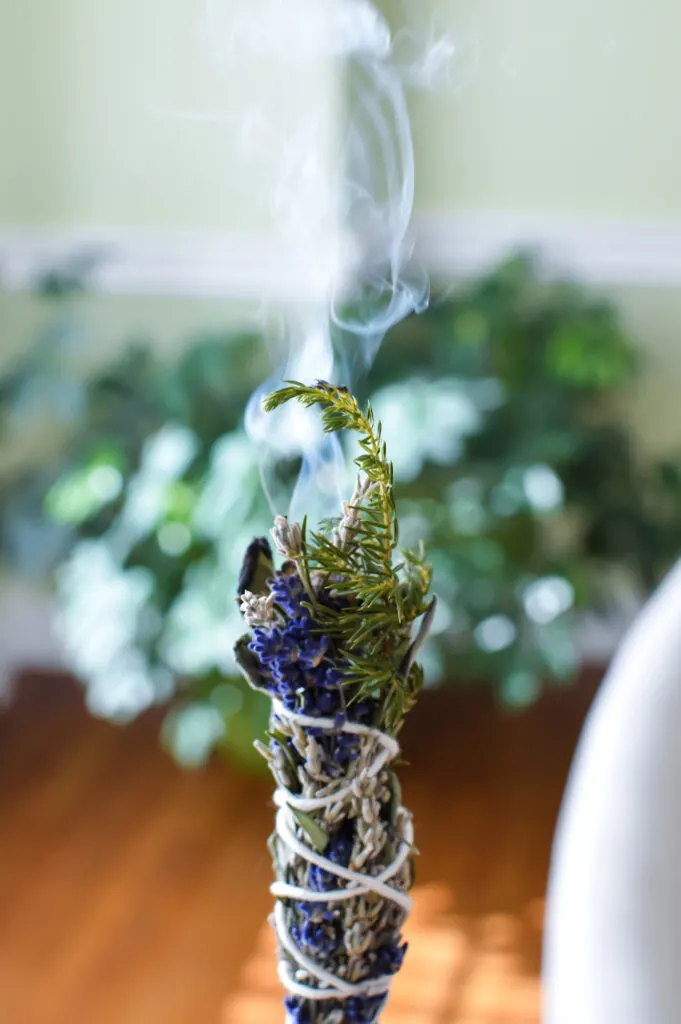
While burning and smudging, you do not want ash to fall down and cause a fire hazard, or ruin your carpeting or furniture. Use a fire-safe bowl or any other item (such as a cast iron pan, glass bowl that is heat-safe for cooking, an ash-tray, etc.) to lay the smoldering smudge stick in and collect ash.
Other popular ways to hold a smoldering smudge stick while burning include:
How to Use a Smudge Stick
Smudge sticks are used to clear a room or a home from negative energy and spirits. The smoke from smudge sticks can also be directed towards a person to clear energy and purify.
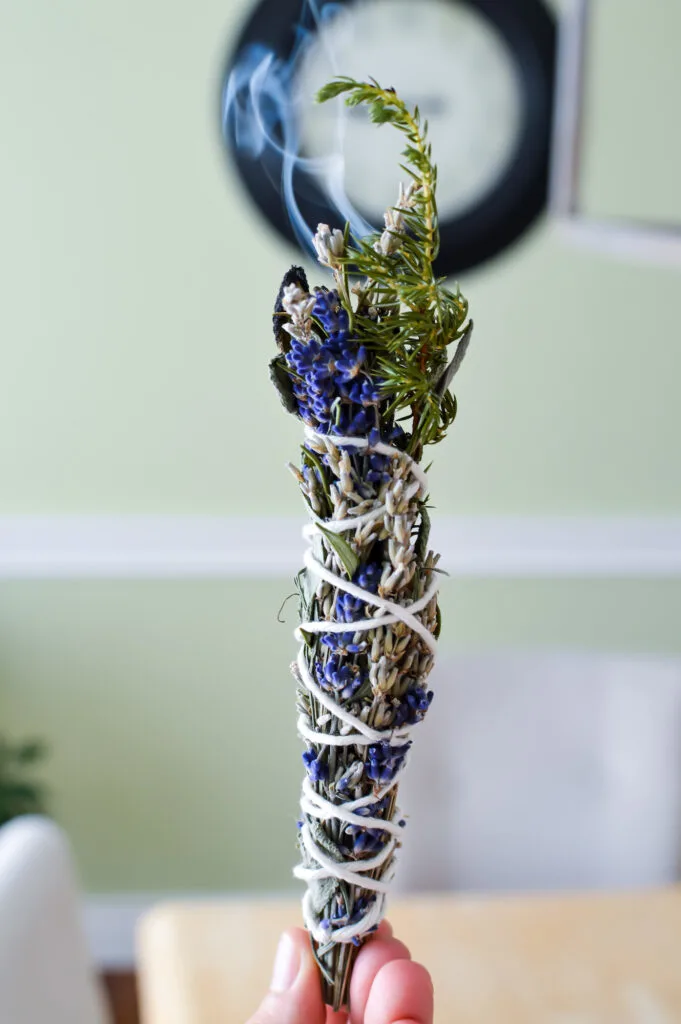
When smudging, open up the drapes or blinds and open up the windows or doors in a room. This allows fresh air to come in and replace old, stagnant air inside. Clearing clutter and to-do piles is also wise, to allow for fresh energy to come in.
While burning a smudge stick, clear your mind and only think of the positive intentions you have for smudging. Focus on the intent and actions you want the burning incense to achieve. Think of positive new energy coming in, while old, negative and problematic energy leaves. This is a very integral part of smudging.
Draw the smoke of a smudge stick to the area or the person that you want to cleanse. You can do this with your hand or with a large feather. When drawing the smoke to a person, start with the head and work down towards the toes.

Do I Need a Smudging Feather?
A smudge feather is a common method of directing smudging smoke to a particular place or to a person. However, you do not need to use a feather to receive the benefits of smudging. You can use your hand to waft the smoke.
How to Put Out a Smudge Stick
If you are not allowing the entire stick to burn down, you will need to extinguish the stick after cleansing. Simply put the smoldering end onto a fire-safe plate or bowl filled with just a little bit of sand. Roll the end of the stick around lightly. The sand will put the fire out by reducing oxygen getting to the flames.
You will be able to reuse the stick because it stays dry and is not wet from using water to put out the flame.
Having a source of water nearby is wise when burning a sage smudge stick, in case the flames erupt unexpectedly.
